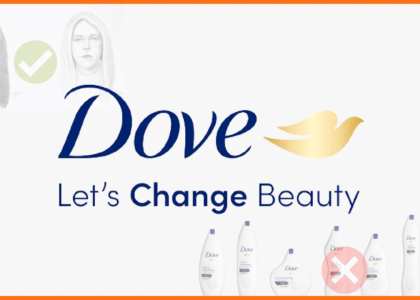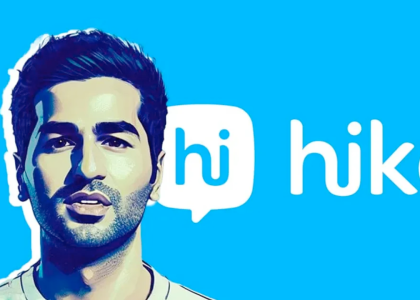Executive Summary
In October 2021, Facebook Inc. made a historic announcement—it would be rebranding to Meta Platforms Inc., signaling a radical strategic pivot from a social media-centric company to one that champions the future of the metaverse. This rebranding was more than cosmetic; it represented a multi-decade bet by CEO Mark Zuckerberg to lead the next evolution of the internet—from 2D social feeds to immersive 3D virtual environments.
The rebranding was aimed at repositioning the company in the face of multiple headwinds: stagnating user growth on core platforms, regulatory pressure over privacy and misinformation, and growing competition from emerging platforms like TikTok. Meta signaled its intent to invest over $10 billion annually into metaverse development through its Reality Labs division—an investment that would drive hardware innovation, AR/VR content, and ecosystem building.
However, the path has been rocky. Shareholders questioned the immense capital expenditure with uncertain ROI, while analysts debated the pace and scale of metaverse adoption. Yet, Meta remains steadfast. This case study analyzes the context, strategy, implementation, and early outcomes of this bold transformation, drawing out key lessons for businesses considering radical future-facing pivots.
1. Background / Situation
1.1. Facebook’s Maturing Core Business
By 2020, Facebook’s original social network had reached saturation in many mature markets. Although the company commanded a monthly active user base of over 2.8 billion, its growth was plateauing in North America and Europe—its most lucrative regions in terms of average revenue per user (ARPU).
At the same time:
-
Ad revenue constituted 97% of the company’s total income, making it overly reliant on one stream.
-
Increasing scrutiny from regulators (Cambridge Analytica, misinformation during elections, antitrust lawsuits) was tarnishing its public image.
-
Apple’s iOS 14 privacy changes (App Tracking Transparency) in 2021 hit Meta’s ad targeting capabilities hard, estimated to cost the company $10 billion in ad revenue losses.
1.2. Rising Competition
New platforms such as TikTok, Twitch, and Discord were capturing Gen Z and Gen Alpha mindshare. These platforms emphasized creator-first ecosystems and immersive or video-first experiences, challenging Facebook’s feed-based model.
Meanwhile, gaming platforms like Roblox and Fortnite were already cultivating early versions of the metaverse—shared digital spaces where people interacted via avatars.
1.3. Need for Reinvention
Faced with:
-
A challenged public perception,
-
The threat of becoming “legacy tech,” and
-
The desire to shape the next computing platform after mobile,
CEO Mark Zuckerberg made a landmark decision to reposition the company around the metaverse—an interconnected network of 3D virtual worlds where users could work, play, socialize, and transact.
2. Strategy / Approach Taken
2.1. Defining the Metaverse Vision
Zuckerberg defined the metaverse as the “embodied internet”, where people don’t just look at content but are immersed in it. He saw it as a successor to mobile internet—equivalent in scale to the transition from desktop to mobile.
Key principles:
-
Persistence: Always-on virtual spaces, not session-based
-
Interoperability: Users could move avatars, assets, and identities across worlds
-
Presence: Social interaction via avatars and spatial audio
-
Ownership: Support for digital goods, NFTs, and creator monetization
2.2. Rebranding to Meta
On October 28, 2021, Facebook officially rebranded itself as Meta Platforms Inc. The company introduced a new corporate logo, “Meta infinity loop,” symbolizing endless possibilities. This rebranding separated the family of apps (Facebook, Instagram, WhatsApp) from the long-term metaverse ambitions of the Reality Labs division.
This naming also helped distance the broader company from Facebook’s social network, which had become increasingly politicized and controversial.
2.3. Organizational Realignment
Meta restructured into two core segments:
-
Family of Apps (FoA): Facebook, Instagram, Messenger, WhatsApp
-
Reality Labs (RL): AR/VR hardware, metaverse software, research
Each division had its own leadership, budgeting, and performance metrics. This separation allowed Reality Labs to operate like a startup within the conglomerate.
2.4. Capital Allocation Strategy
Meta committed to investing $10–15 billion annually into Reality Labs over the next decade. This included:
-
Hardware: Oculus Quest VR headsets (rebranded Meta Quest), Project Nazare AR glasses
-
Software: Horizon Worlds (a social VR platform), Horizon Workrooms (for virtual meetings)
-
Infrastructure: AI research, graphics engines, spatial audio, virtual economy systems
Zuckerberg acknowledged the long-term payback period, predicting that mainstream adoption might take 5–10 years.
3. Implementation
3.1. Product Development
A. Meta Quest Devices
The Quest 2 VR headset became the flagship metaverse device. It accounted for over 80% of global VR headset sales by 2022 (IDC).
In 2023, Meta released:
-
Meta Quest Pro ($1500): Mixed reality headset for prosumers
-
Meta Quest 3 ($499): With color passthrough, better graphics, and improved hand tracking
B. Horizon Worlds
A free, VR-based social experience allowing users to create avatars, build virtual spaces, and interact with others. Initial traction was slow—users cited motion sickness, clunky graphics, and poor content quality.
By 2023, Meta launched mobile and web versions of Horizon to improve accessibility beyond VR users.
C. Avatars & Digital Identity
Meta built a unified Avatar SDK that allowed users to create persistent avatars used across Facebook, Instagram, and VR apps. It added expression tracking, virtual clothing, and NFT integration.
3.2. Partner Ecosystem & Developer Support
Meta launched a $150M Creator Fund to incentivize developers to build experiences on Horizon. It also hosted Metaverse Academies in partnership with educational institutions to skill AR/VR developers.
Major collaborations:
-
Accenture for enterprise metaverse use cases
-
Microsoft to bring Teams and Office into VR
-
Unity and Unreal Engine for content creation
3.3. Marketing & Brand Positioning
Meta executed a multi-channel campaign:
-
High-production brand films explaining the metaverse vision
-
Integration into events like CES, Meta Connect
-
Influencer partnerships with VR creators and streamers
Public statements from Zuckerberg, including the 2021 Connect keynote, positioned Meta as the company building the metaverse—not just participating in it.
4. Results & Impact
4.1. Financial Impact
While Meta’s ad business continued to generate robust cash flows, Reality Labs posted heavy losses:
|
Year |
Reality Labs Revenue |
Reality Labs Loss |
|---|---|---|
|
2021 |
$2.3 billion |
-$10.2 billion |
|
2022 |
$2.2 billion |
-$13.7 billion |
|
2023 |
$1.9 billion (est.) |
-$15+ billion |
This raised concern among investors, especially during the 2022 tech downturn, leading to a 70% decline in Meta’s stock price in 2022. However, in 2023, Meta rebounded as it recommitted to efficiency and AI investment, recovering investor trust.
4.2. Mixed User Adoption
-
Quest 2 sold over 20 million units, making it the most popular VR headset
-
However, daily active users (DAUs) in Horizon Worlds hovered below 300,000
-
Enterprise use cases (training, virtual meetings) grew, but consumer use remained niche
4.3. Strategic Spillovers
-
Meta’s AI and hardware investments spilled into other areas, e.g., generative AI models and smart wearables
-
Improved spatial computing and photorealistic avatars benefitted gaming and workplace apps
4.4. Competitive Landscape
Rivals like Apple entered the market with Apple Vision Pro, taking a premium AR-first approach. Microsoft focused on enterprise XR with HoloLens, while Roblox and Fortnite captured younger users in pseudo-metaverse spaces.
5. Best Practices / Learnings
5.1. Strategic Clarity in Long-Term Bets: Meta’s rebrand gave strategic coherence to a company betting on a multi-decade tech shift. This clarity, while controversial, ensured focused R&D, talent recruitment, and brand positioning.
Learning: Vision-led pivots require top-down alignment, even at the cost of near-term discomfort.
5.2. Parallel Execution—Core vs. Future: Meta continued to invest in its FoA platforms (e.g., Reels on Instagram) while building for the metaverse. This bimodal strategy helped fund risky innovation while keeping the core profitable.
Learning: Protect the core while building the future—dual-speed execution is critical.
5.3. Building Hardware + Ecosystem: Meta realized early that owning just software wouldn’t suffice. It needed to build the entire stack—hardware, software, distribution, and community.
Learning: Ecosystem control (like Apple) is essential in platform transitions.
5.4. Overcommunication and Expectation Management: One criticism of Meta’s strategy was overhyping the metaverse timeline, leading to disillusionment when results didn’t match. Horizon Worlds’ performance fell short of expectations, triggering media backlash.
Learning: In future-facing bets, set realistic timelines, communicate iteratively, and share milestones transparently.
5.5. Preparing for Second-Order Effects: Meta’s metaverse R&D enhanced its AI capabilities, powering innovations like LLaMA (its large language model), real-time translation, and photorealistic avatars. These spillovers have positioned Meta as a contender in generative AI.
Learning: Radical innovation can trigger positive externalities in adjacent domains.
6. Sources
-
Meta Platforms Annual Reports (2021–2023)
-
Zuckerberg’s Meta Connect Keynote (2021, 2022, 2023)
-
IDC & Statista VR Market Share Reports (2022–2023)
-
The Verge: Meta’s Reality Labs Financial Disclosures
-
Wall Street Journal, “Inside Meta’s Metaverse Gamble”
-
Harvard Business Review, “Rebranding for Strategic Shifts”
-
Financial Times, “Facebook’s Future Hinges on Meta”






